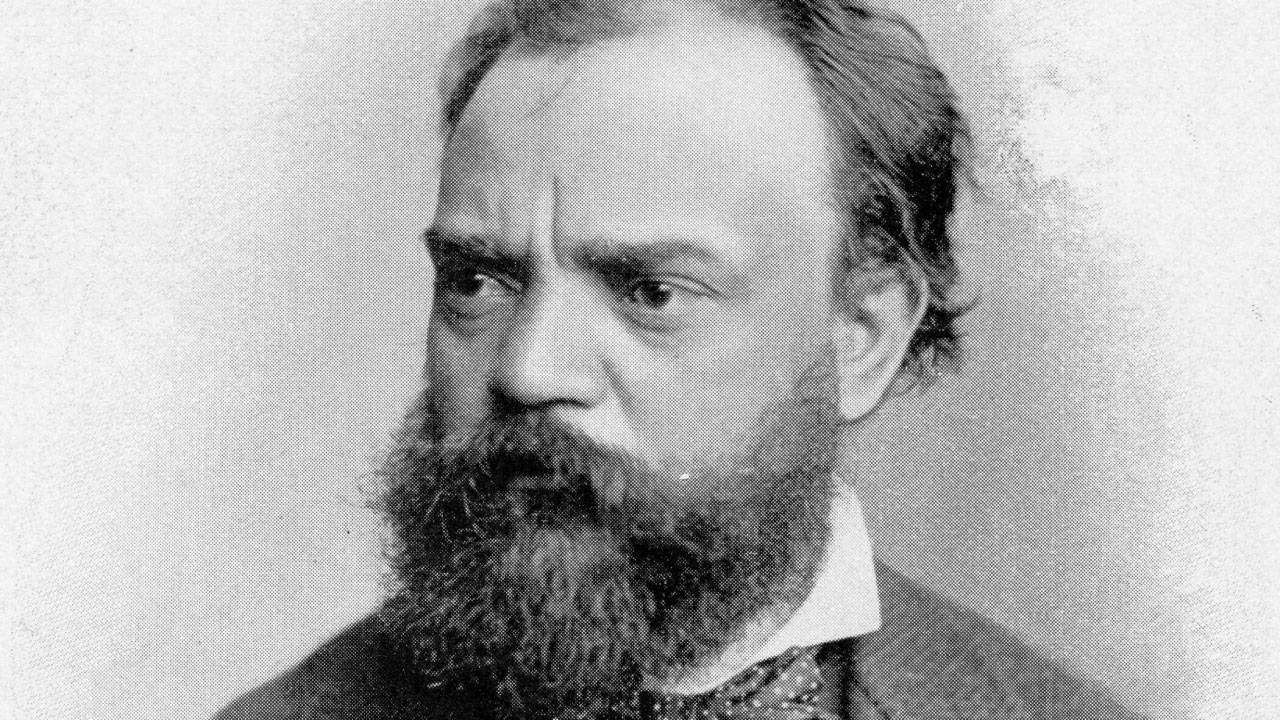Today marks the 180th anniversary of the birth of Antonín Dvořák (1841-1904).
The legacy of the famous Czech Romanticist includes monumental symphonies, nationalistic tone poems, chamber music, opera, and the soulful and nostalgic Cello Concerto. Yet, it was the sixteen Slavonic Dances, almost singlehandedly, that lifted Dvořák out of relative obscurity and poverty.
These sublime Bohemian miniatures were published in two sets (Op. 46 and 72) in 1878 and 1886. In a letter to Brahms, the Berlin-based publisher Fritz Simrock was enchanted by the “strange folk-like quality, national poetic sensibility and sensual attraction” of Dvořák’s newly published Moravian Duets. On March 6, 1878, Simrock wrote to the composer asking for “Bohemian and Moravian dances for piano four-hands.” This kind of salon music, played by amateurs at home, was the nineteenth century equivalent of a chart-topping pop song. The initial collection of eight dances was so successful that Simrock threatened to cancel publication of Dvořák’s Seventh Symphony unless the composer wrote a second set.
Brahms’ gypsy-infused Hungarian Dances, also published by Simrock, served as a model for Dvořák. While Brahms set existing folk music, Dvořák composed enticing new melodies, wrapped in the Bohemian rhythms of his homeland. He orchestrated the Slavonic Dances soon after completing the piano score.
The Slavonic Dances are some of the most enduring popular music ever conceived. They are filled with conversing instrumental voices, surprising harmonic shifts, infectious folk rhythms, and sensuous melodies. The folk dances include the furiant, the dumka, the polka, the sousedská, the skočná, the mazurka, the odzemek, the špacírka, the kolo and the polonaise.
Here are a few excerpts, followed by the complete Slavonic Dances:
Op. 72, No. 2/Op. 46, No. 3 (George Szell and the Cleveland Orchestra)
Released in 1970, this comes from George Szell’s final recording with the Cleveland Orchestra. First we hear the haunting Slavonic Dance In E Minor, Op. 72, No. 2. This is followed by Slavonic Dance In A-Flat, Op. 46, No. 3. The second dance begins with a feeling of wistfulness before erupting into a boisterous polka. Listen for the singing, Schubert-like countermelody in the cellos.
Op. 46, No. 7 (Christoph von Dohnányi and the Cleveland Orchestra)
The Slavonic Dance in C minor, Op. 46, No. 7 is a celebration of canonic counterpoint.
Op. 46, No. 8 (Jiri Belohlavek and the Czech Philharmonic Orchestra)
The Op. 46 set concludes with this wild and exhilarating furiant in G minor.
Slavonic Dances (Rafael Kubelik and the Bavarian Radio Symphony Orchestra)
Op. 46
- No. 1 in C major (Furiant)
- No. 2 in E minor (Dumka)
- No. 3 in A-flat major (Polka)
- No. 4 in F major (Sousedská)
- No. 5 in A major (Skočná)
- No. 6 in D major (Sousedská)
- No. 7 in C minor (Skočná)
- No. 8 in G minor (Furiant)
Op. 72
- No. 1 (9) in B major (Odzemek)
- No. 2 (10) in E minor (Starodávný)
- No. 3 (11) in F major (Skočná)
- No. 4 (12) in D-flat major (Dumka)
- No. 5 (13) in B-flat minor (Špacírka)
- No. 6 (14) in B-flat major (Starodávný)
- No. 7 (15) in C major (Kolo)
- No. 8 (16) in A♭ major (Sousedská)
Recordings
- Dvořák: Slavonic Dances, Op. 46, Op. 72, George Szell, The Cleveland Orchestra Amazon
- Dvořák: Slavonic Dances, Op. 46, Op. 72, Christoph von Dohnányi, The Cleveland Orchestra Amazon
- Dvořák: Slavonic Dances, Op. 46, Op. 72, Jiri Belohlavek, Czech Philharmonic Orchestra Amazon
- Dvořák: Slavonic Dances, Op. 46, Op. 72, Rafael Kubelik, Bavarian Radio Symphony Orchestra Amazon
Featured Image: Antonín Dvořák

